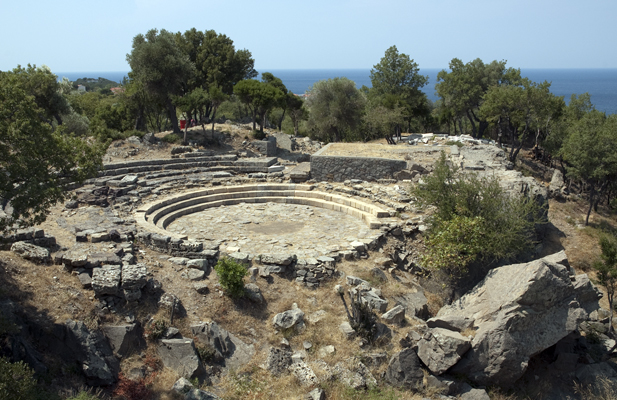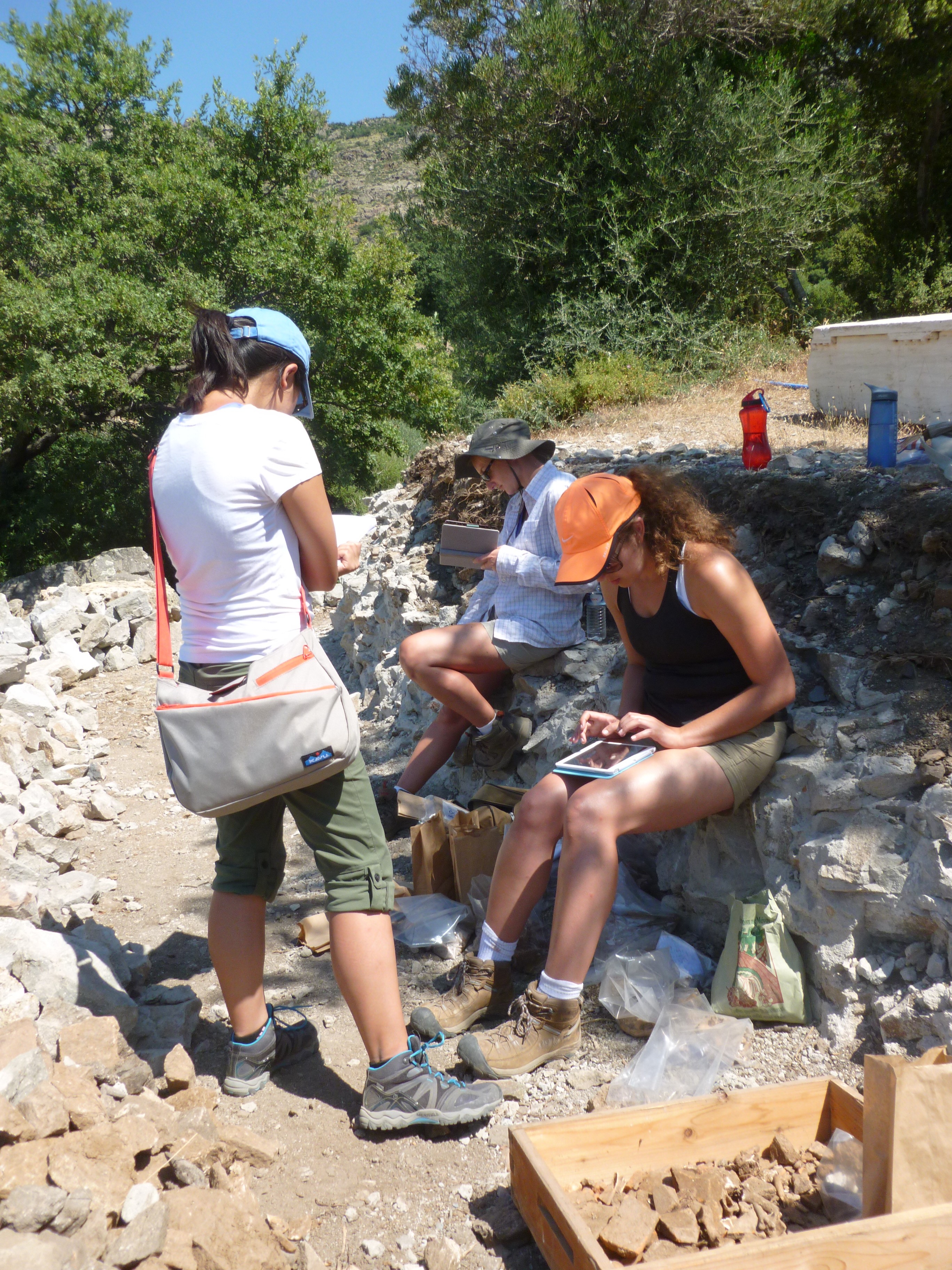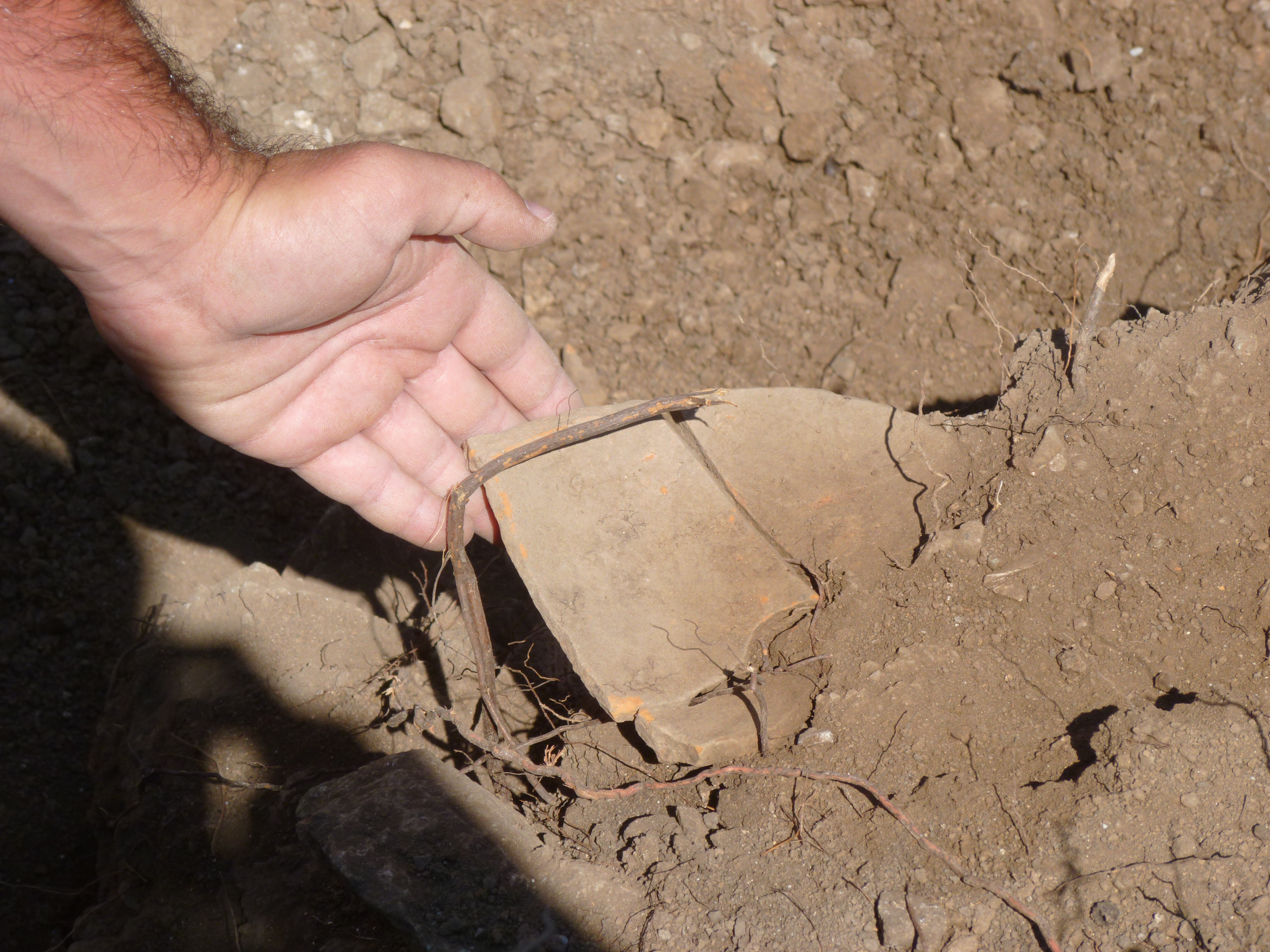To the Rescue! Excavating for Site Management
Excavation has a long and glorious history here on Samothrace. Antiquarians have visited the sanctuary since 1444, when Cyriacus of Ancona visited the Genoese nobility on the island and drew some of the sanctuary’s buildings. German, French, Greek, Austrian, and Czech teams have all completed excavations on the site; American excavations sponsored by New York University’s Institute of Fine Arts began in 1938 under the direction of Karl Lehmann and continued under James R. McCredie. They are presently sponsored by Emory University and directed by Bonna D. Wescoat.
Although we are not currently excavating new territory, we have completed two rescue excavations on the Eastern Hill for the site management of the sanctuary: one to make way for the new retaining wall of the Theatral Circle and another behind the retaining wall along the Sacred Way, in order to conserve the wall.
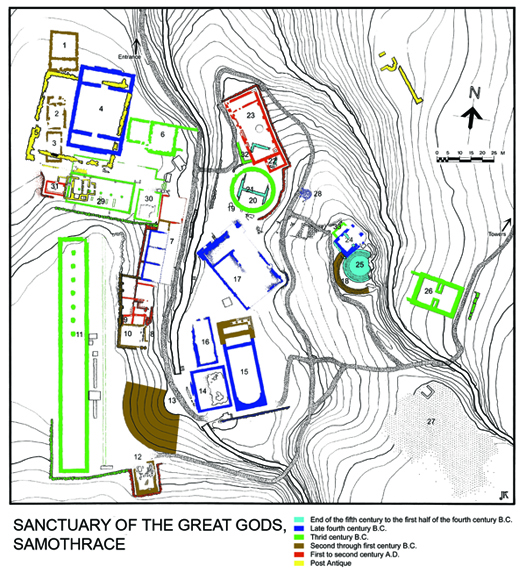
Plan of the Sanctuary. Our trenches were on the Eastern Hill near the Theatral Circle (25) and on the Sacred Way (the path leading from 33).
Our Greek colleagues have put together a plan to build a new retaining wall near the Theatral Circle to replace the one built in 1999 and to repair the ancient retaining wall along the Sacred Way, which is leaning precariously into the ancient paved pathway.
Theatral Circle

Our trench on the far side of the Theatral Circle, as seen from the Dedication of Philip III and Alexander IV.
We started excavating the earth behind the 1999 retaining wall behind the Theatral Circle after it was removed. What we expected to be sterile previously excavated soil (a trench had been cut there by McCredie’s team in the 1960s) ended up producing a multitude of interesting finds. We divided up the area of excavation into three trenches labeled very creatively as Trench 1, Trench 2, and the Balk (the area in between Trenches 1 & 2 which was excavated last).
When excavating, context is vital and we therefore use a system of stratigraphy units to denote contexts that represent different periods of time. Because archaeology is destructive and not replicable, we also keep a field notebook detailing the actions we take as we excavate, describing each stratigraphy unit as we remove it and the finds that are discovered.
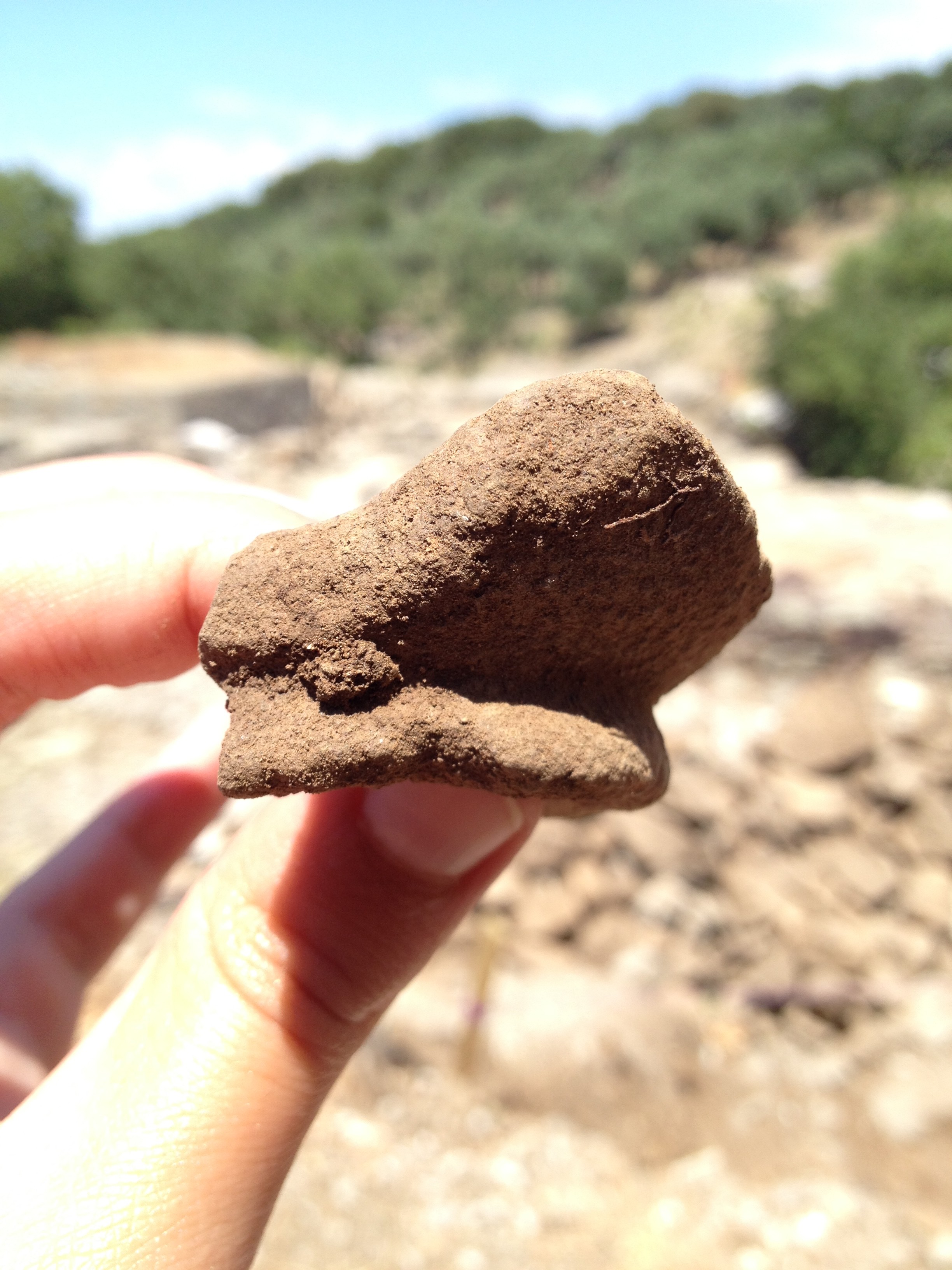
A broken coarse ware ring foot found during excavation of the Theatral Circle’s retaining wall. It probably belongs to a small bowl.
The multitudes of broken pottery, roof tiles, and bones that we found behind the retaining wall were striking. We also discovered a potentially unexcavated marble cache that was probably only missed by inches in the 1965 trench. These marble fragments were probably intended for the nearby lime kiln that had been built on top of the Theatral Circle.
Sacred Way
The retaining wall of the Sacred Way was built in the Hellenistic period to hold back the hillside as the pathway cut into the earth, taking the initiates from the Theatral Circle down into the heart of the sanctuary. The centuries have taken their toll on the wall and it is now leaning into the Sacred Way. Our Greek colleagues plan to conserve and straighten the wall; the first stage of this plan was to excavate the earth behind the wall.
We dug down all the way to bedrock; the soil was completely sterile. When we began to clean the packing between the stones of the wall, we found a few fragments of pottery. The packing itself included river pebbles, which is intriguing and we sampled some to investigate further. Although we have very few finds from this trench, key sherds have now helped us date the wall. In addition, we learned valuable information about how the retaining wall was constructed.
After Excavation
Once both excavations were finished, we processed our finds by washing them and cataloging them in our database.

